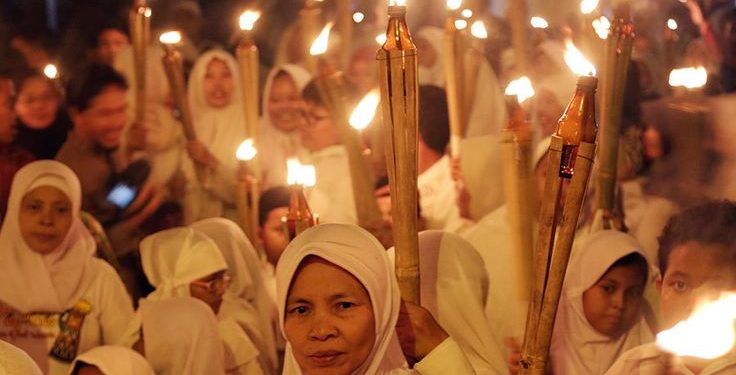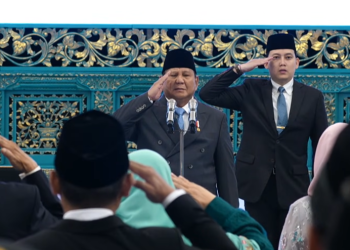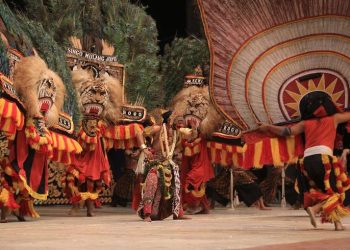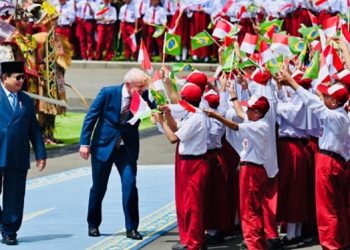Jakarta, Indonesia Sentinel — Eid al-Fitr is the most anticipated holiday for Muslims worldwide, marking the end of the holy month of Ramadan. In Indonesia, the Eid al-Fitr celebrations go beyond family gatherings and prayers, as many regions uphold unique traditions passed down through generations.
These traditions not only serve as expressions of gratitude to God but also play a vital role in preserving Indonesia’s rich cultural heritage. Here are five distinctive Eid traditions found across Indonesia.
Grebeg Syawal – Yogyakarta
Held annually on the 1st of Syawal, Grebeg Syawal is a royal ceremony performed by the Yogyakarta and Surakarta palaces. The event features a grand procession carrying large cone-shaped offerings known as gunungan, made from agricultural produce such as vegetables and fruits.
There are two types of gunungan: Gunungan Kakung (male) and Gunungan Putri (female), symbolizing the Sultan’s generosity towards his people. After a ceremonial blessing, the offerings are distributed among the public—but not in an orderly manner. Instead, they are fiercely scrambled for, as many believe that obtaining a piece of the gunungan will bring prosperity and blessings.
Ronjok Sayak – Bengkulu
Ronjok Sayak is a coconut shell-burning tradition practiced by the Serawai ethnic group in Bengkulu. More than just an act of burning shells, this ritual carries deep symbolic and philosophical meaning.
Taking place on the eve of Eid, the tradition represents self-purification and communal harmony. Residents gather to arrange coconut shells in a towering structure resembling a mountain, which is then set ablaze. This mesmerizing display is not only a spectacle but also a moment of spiritual reflection, as people pray for blessings and remember their ancestors.
Perang Topat – Lombok
Perang Topat, or the “Rice Cake War,” is a post-Eid tradition in Lombok, held six days after Eid. Despite its name, this ritual is far from a violent battle—it is a joyful celebration of gratitude and interfaith harmony between the indigenous Sasak people and the Balinese community.
The event begins with a procession of agricultural offerings, followed by a playful exchange where participants throw ketupat (rice cakes wrapped in coconut leaves) at each other. What makes this tradition unique is its location: it takes place at Lingsar Temple, a site that symbolizes the coexistence of Islam and Hinduism on the island.
Read Also:
Unique Ramadan Traditions in Indonesia: Waking Up for Suhoor
Binarundak – Motoboi Besar, North Sulawesi
While ketupat is synonymous with Eid across Indonesia, the people of Motoboi Besar in North Sulawesi celebrate with a different delicacy—nasi jaha (glutinous rice cooked in bamboo).
Three days after Eid, families and neighbors gather for Binarundak, a communal feast that strengthens social bonds. Bamboo tubes lined with banana leaves are filled with rice and coconut milk, then slow-cooked over coconut husk fires. Once the rice is cooked, the entire community enjoys the meal together in an expression of gratitude and unity.
Tumbilotohe – Gorontalo
Derived from the Gorontalo language, Tumbilotohe translates to “lighting lamps.” This breathtaking festival marks the last three nights of Ramadan as a farewell to the holy month. Residents illuminate their homes, streets, and mosques with traditional oil lamps called Tohetutu, creating a mesmerizing glow throughout the city.
The festival reached a milestone in 2007 when it entered the Indonesian Museum of Records (MURI) for illuminating Gorontalo with five million lamps. Beyond lighting up roads, the lamps are arranged into artistic formations resembling mosques, Quranic verses, and Islamic calligraphy, enhancing the festive spirit.
Preserving Tradition in Modern Times
Indonesia’s diverse Eid al-Fitr traditions showcase the nation’s cultural richness and deep-rooted communal values. While modernization continues to shape celebrations, these time-honored customs remain an integral part of Indonesia’s identity, bringing people together in gratitude, unity, and festivity.
(Raidi/Agung)
























